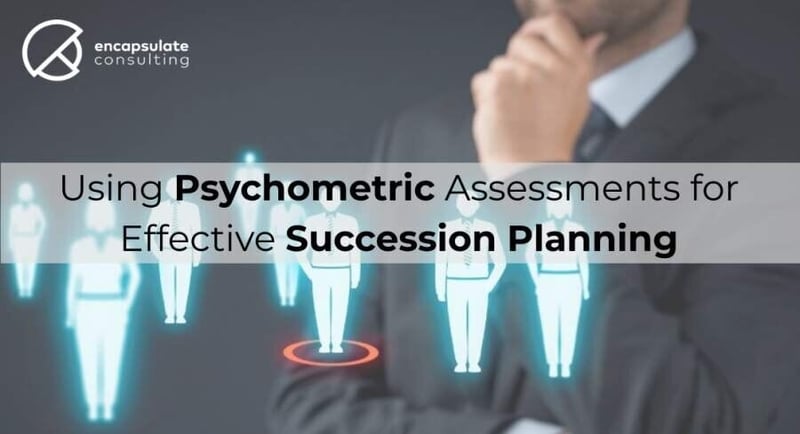3 ways Psychometric Assessments can assist with Effective Succession Plan Strategies
Written by: Kirsten Halcrow Save to Instapaper
It is not a surprise that the main failure of family businesses is succession planning, with only 17 percent of family entities having a succession plan in place. The moment of transition from one generation to the next is a huge fault line of this business model. There is no point in having detailed plans for business continuity if the single most significant risk is not addressed. There may well be a strong pipeline of potential next-generation leadership, but with no formal succession plan in place, internal family conflict may undermine future growth, profitability and ultimately the existence of the business.
What companies such as McCain Foods and Pick n Pay have in common is that both successful businesses came from humble beginnings and were first and foremost family businesses.
In today’s fast-paced and competitive business environment businesses require top-notch leadership teams that have a deep understanding of disruptive technologies, dynamic workplace changes, and potential disruptors of their company’s business model. Building such high performing teams is a challenge when there is no formal succession plan in place.
So, how can businesses manage succession planning more effectively?
The answer lies in HR’s ability to identify high potential employees and individuals and groom them to meet requirements of senior roles.Psychometric Assessments are a key enabler in helping HR identify leadership potential and move employees from individual contributor to leadership positions. When used effectively, these tools can help identify and rank high potential candidates.
Here are three ways you can leverage assessments for effective career planning and succession mapping:
No. 1: Identify high performers
Senior leadership roles require a complex range of skills, abilities and traits. Assessing behavioural competencies, cognitive and critical thinking abilities and role expertise can provide a comprehensive view of potential leaders’ capabilities and gaps. Assessments can help you determine if an individual has the necessary expertise and their ability to deal with pressures and stress and carry out long-term planning.
No. 2: Build leadership skills
Psychometric assessment tools are useful in exploring an individual’s leadership style and identifying the work personality required for complex leadership roles. Based on the results of the assessment, you can deploy the right learning modules for reskilling and up skilling to close the identified gaps, and equip them for leadership success.
No. 3: Match mentor and mentees
Mentoring, when done right, can accelerate leadership development and readiness. But the success of mentorship program depends on the mentor-mentee relationship. Assessment tools are great way to analyze the skill and intention gap, and build a mentorship program that is aligned with business succession goals and individual development. Such initiatives not only help create a highly engaged workforce but also pair high potential managers with the board of directors and managing partners for on-the-job training.
At a time when building a talent rich business is pivotal to success, companies with assessment-backed succession planning are better placed to objectively rank employees for senior positions according to job-specific qualifications, behavioural competencies and current job performance.
The result: an enhanced ability to map future leadership needs and build a leadership team that has the right combination of skill sets, backgrounds, experiences and perspectives for running a successful enterprise.
Get new press articles by email
Innovative, Level 2 B-BBEE, psychometric assessment solutions for business owners, HR & recruitment specialists
Latest from
- The Pitfalls of Free Online Psychometric Testing in Recruitment
- Unveiling the Power of Holistic Assessment
- How do you identify High Potential Employees?
- Traits of a Successful C-Level Executive and using Psychometric Assessments
- Psychometric Assessments - all you need to know
- High-Potential Identification for your business
- The 10 Most Effective Selection Methods
- What do you hire for?- Skills, experience or potential?
- Using Psychometric Assessment to reveal whats "behind the mask"
- Alleviating the burden of high-volume recruiting in SA's BPO/ Call-centre environment
- Intelligent Workplaces - EQ to the Rescue
- A psychometric assessment that measures dimensions critical to success of remote workers.
The Pulse Latest Articles
- Education Is The Frontline Of Inequality, Business Must Show Up (December 11, 2025)
- When The Purple Profile Pictures Fade, The Real Work Begins (December 11, 2025)
- Dear Santa, Please Skip The Socks This Year (December 10, 2025)
- Brandtech+ Has 100 Global Creative Roles For South African Talent (December 9, 2025)
- The Woman Behind Bertie: Michelle’s Journey To Cape Town’s Beloved Mobile Café (December 9, 2025)
